#seahistory
Text

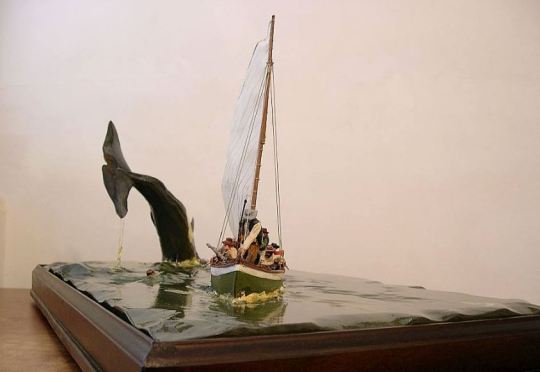
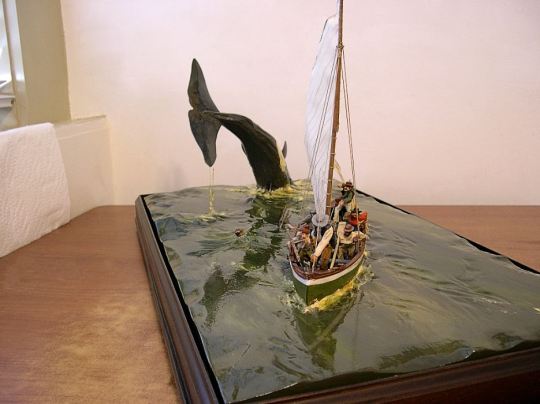

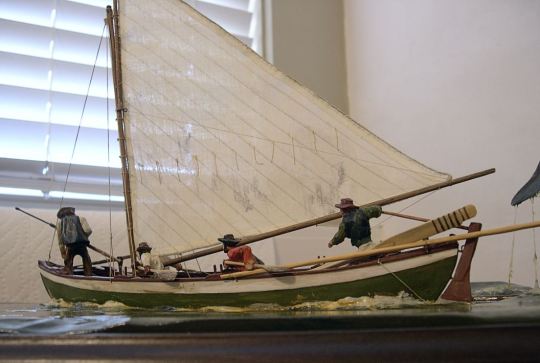
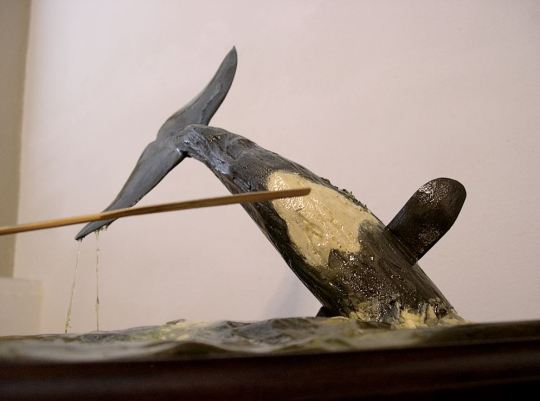
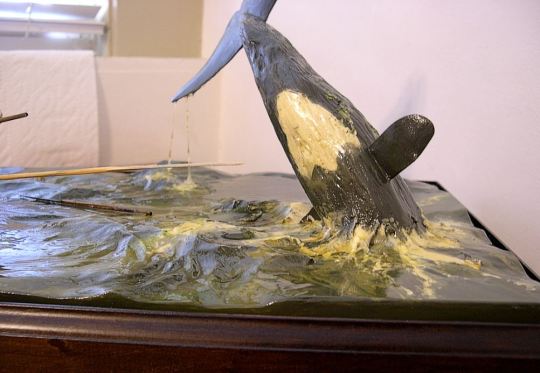
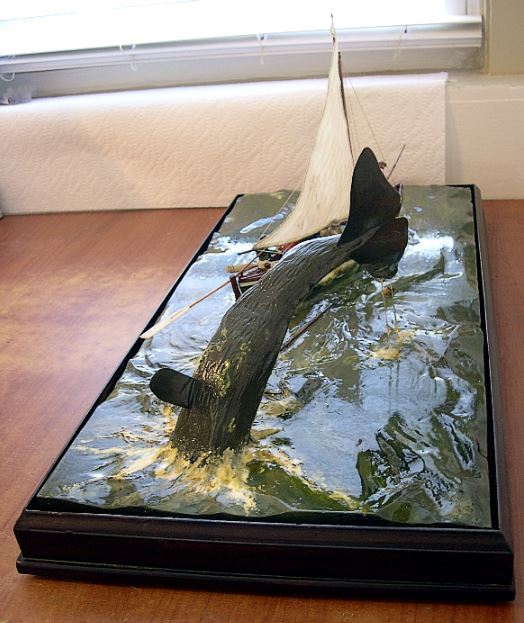
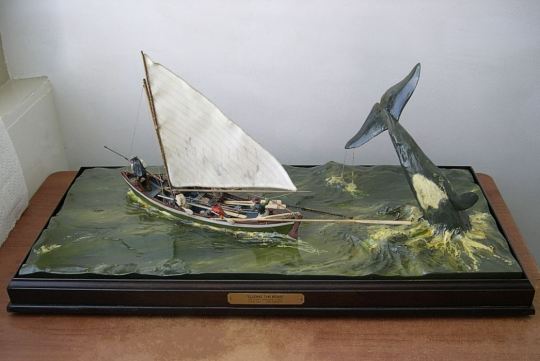
Here, I post a piece that's on its way to a collector in New England. A work which I hand carved entirely of pine (with basswood accents). The work represent America's whaling industry during its early Industrial Age. The video can be viewed here https://youtube.com/watch?v=6523G6QCIUk .
#collectible#oneofakind#craftsman#usa#maritime#woodsculpture#diorama#nantucketdecor#fineart#original#age of sail#shiphistory#new england#nantucket#whaling#seahistory#nautical#nautical art#whaleboat#whale#whale tail#fine art#fine artist#investment#woodart#woodworking#maritime history#culture#whalingmuseum#whalingart
14 notes
·
View notes
Photo

#Repost @archaeohistories ・・・ On 18th of July, 1700, first use of a ‘skull and crossbones’ upon a black flag flown on a vessel by a pirate was recorded. Near Cape Verde Islands, off West African coastline, pirate Emanuel Wynn (an English merchant captain who had turned to piracy engaging ships of coast of Carolina) would both engage and then escape Captain John Cranby commanding HMS Poole. In his report of incident Cranby made a point to document pirate’s flag, which he described as ���a sable ensign with cross bones, a death’s head and an hourglass in fly.” Cranby had chased pirate into a cove at Brava Island where Wynn was able to hold out assault and had slipped away, due to HMS Poole’s delay in making an assault against him while they had attempted to recruit nearby Portuguese soldiers for cause. Skull and crossed bones, as well as hourglass, were common motifs upon tombstones and memento mori objects of the time, symbolic reminders that death comes for all; with hourglass representing a reminder that time is ticking. No other reports of time mentioned other pirates flying similar flags, usually only black or red solid flags, but throughout following years, similar memento mori motifs would come to be documented being flown by many other pirates during Golden Age of Piracy. It is worth noting that years prior, in 1683 during Sack of Vera Cruz, French buccaneers marching overland were mentioned to have at one point raise high a "red flag with a death's head in center, and two crossed bones below the head, in white, in middle of red." There is a possibility that their flag they obviously possessed may have been hoisted on their ship at some point, but this scenario on land is only time flag being flown is reported. 📷1 : a depiction of flag flown by Emanuel Wynn based on witness description, and a cove on Brava Island near Cape Verde; 📷2 : Ship flying Emmanuel Wynn's flag. #pirates #pirate #pirateflag #fact #pirateship #piratehistory #facts #history #archaeohistories #capeverde #capeverdeislands #historyfacts #archaeology #emanualwynn #piracy #sea #seahistory #skullcrossbones #skullandcrossbones #skullflag #piratesofthecaribbean #piratebay https://www.instagram.com/p/ChqIl6vpFbO/?igshid=NGJjMDIxMWI=
#repost#pirates#pirate#pirateflag#fact#pirateship#piratehistory#facts#history#archaeohistories#capeverde#capeverdeislands#historyfacts#archaeology#emanualwynn#piracy#sea#seahistory#skullcrossbones#skullandcrossbones#skullflag#piratesofthecaribbean#piratebay
1 note
·
View note
Text

Sea History 139 - Summer 2012
About
10 The War of 1812: US Revenue Cutter Operations, by William H. Thiesen • 16 War Reporting in 1812-Through Song, by David Hildebrand • 22 History in the Palm of Your Hand-Recreating the Figureheads of the US Navy in Miniature, by Lloyd McCaffery • 26 Stellwagen Bank Celebrates Its 20th Anniversary, by Deborah E. Marx • 28 The History of the "Racing Stripe" Emblem and Brand Identity for World Sea Services and Coast Guards, by William H. Thiesen and Christian Ostersehlte • 38 Managing Titanic, by Deirdre O'Regan
Read it on:https://issuu.com/seahistory/docs/sh_139_summer-2012
#Sea history magazine#magazine cover#Sea history#summer 2012#Sea History 139#ship#history#photo#reading
1 note
·
View note
Photo
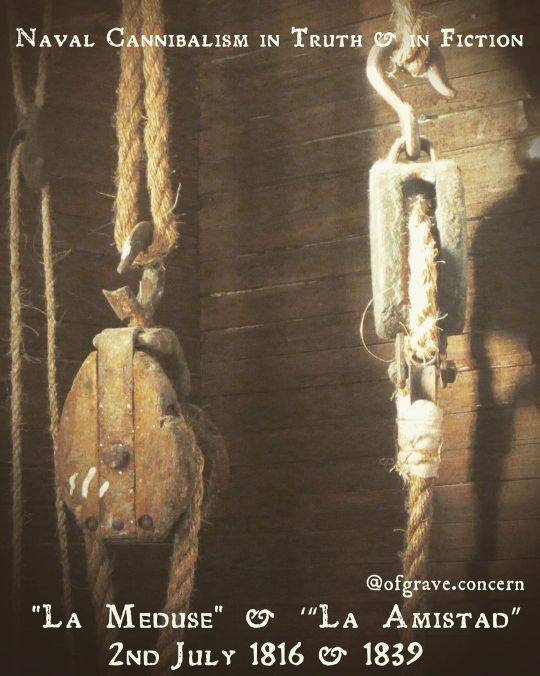
2nd July 1816, the French frigate "La Méduse", under the incompetent captaincy of the Viscount of Chaumareys, runs aground at the Bank of Arguin off the coast of present-day Mauritania. The forced execution of 400 passengers becomes a panic, with 151 men forced to take refuge on an improvised raft. The raft drifts in the open sea for the next 13 days amidst horrific scenes of riots, murder, drowning by storms, madness, suicide, starvation and eventual cannibalism. After 13 days the raft is discovered with 15 people barely alive. News of the tragedy became widespread with the horrific tales becoming sensationalised through the accounts of the rafts survivors. The scene was immortalised by the French Romantic painter Théodore Géricault in his ‘The Raft of the Medusa’, completed in 1819. 2nd July 1839. Mende Slaves led by Sengbe Pieh aboard the Spanish schooner ‘La Amistad’ revolt and secure their freedom, after jokingly being told by the ship’s cook that they were to be "killed, salted, and cooked". Pieh was the first to unshackle himself and led the rest of the slaves to take the ship, killing both the captain and the cook. Sailing to the east coast of the United States, they were seized by the US ship ‘Washington’. Imprisoned in New Haven Connecticut, their case became a key legal debate in the early fight for abolition. In 1841, the international case known as ‘United States v. The Amistad’, ruled in their favour, and they were freed. You are cordially invited to follow @ofgrave.concern for more dark tales from history, and associated historically inspired art. #darkhistory #theraftofthemedusa #lameduse #navalhistory #theodoregericault #théodoregéricault #macabre #macabrehistory #cannibalism #darkstories #shipwreck #laamistad #slavery #sengbepieh #abolition #abolitionist #19thcentury #19thcenturyhistory #seahistory #sailinghistory #slaveship #gothictales #historicalstory #historicaltales #historystory https://www.instagram.com/p/CQ1MkpnF5MM/?utm_medium=tumblr
#darkhistory#theraftofthemedusa#lameduse#navalhistory#theodoregericault#théodoregéricault#macabre#macabrehistory#cannibalism#darkstories#shipwreck#laamistad#slavery#sengbepieh#abolition#abolitionist#19thcentury#19thcenturyhistory#seahistory#sailinghistory#slaveship#gothictales#historicalstory#historicaltales#historystory
4 notes
·
View notes
Photo

While sorting a small collection of ephemera, one of our interns found a few four leaf clovers pressed into this glossary! Hope you have a lucky St.Patrick's Day shipsters! #fourleafclover #happystpatricksday #stpattysday #shiphistory #shipbuilding #seahistory #archives #libraries #museums #maritimehistory #ri #rhodeisland
#rhodeisland#stpattysday#seahistory#ri#happystpatricksday#maritimehistory#fourleafclover#museums#shiphistory#archives#shipbuilding#libraries
2 notes
·
View notes
Note
Obae obae tell us about barnicles!! 👀 And their cursed lil leggies!
Barnicles!! Hmmm what do I know about barnicles... [thinking face]
I know I don't like them, that I do know. Their leggies are indeed cursed and looking at images of them for this ask was very not nice for me xD
So:
Barni-barnacles!
Barnacles are arthropods basically meaning they're invertebrates (no spiney-spine) with their bones on the outside rather than the inside (exoskeleton), with a segmented body and paired joints. They're related to lobsters and crabs via all the fancy scientific classification of animals aka: sub-class of Cirripedia where they're a sub-phylum of Crustacea (aka lobsters and crabs) and honestly, I enjoy knowing None Of This.
They're marine only (thank the gods), live in shallow and tidal waters and, depending on the type, either attach to anything that is substrate (basically any material that has some sort of layer to it that allows for grabby grabby attachment to happen; like rocks) or a symbiont like a whale or whatever which is can gain food from without having to do literally anything.
The most common kind of barnacles are acorn barnacles and I bet you'll recognise them because they're basically like the ones that show up on whales and boats all the damned time. Like. All the time.
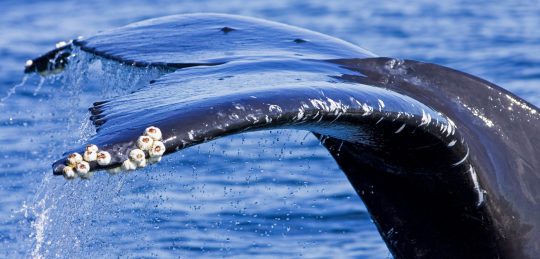
[image source: hakaimagazine]
Whale barnacles are a specific type of acorn barnacles that show up a heckin lot. They're usually seen on baleen whales and toothed whales (aka filter feeders or hunty boys: blue whale or orca is what I'm saying). They're actually used by scientists to study whale migration because they typically last on a whale for about a years, usually falling (is it falling? I don't think that's the right word but eh) off when the whales are doing their migration for baby making etc.

[image source: theethogram]
Acorn barnacles are the ones that look, well, actually kinda like a half-furled flower that doesn't know if it wants to open fully or not. This is because they grow six hard calcaeous plates around themselves for protection. With just enough space for their leggies to stick out and get food and water to their body lying on its tummy inside the carapace (hardened shell designed to protecc).
These sods don't have real hearts (heartless bastards) but a sinus alongside their throat which pumps blood via muscles in a similar manner. They also don't have gills and absord oxygen through their leggies.
Not creepy at all.
The ocean is fucking terrifying, I stand by this.
Anyway. Their leggies.
They have eight pairs of leggies which stick out and floof around the way they do like all feathery and shit, absorbing food and water particles (actual water, like hydration, not salty water). I don't think I want to know much more about their cursed leggies but... well.

[image source: seahistory]
*googles*
FUCKING WHY DO I HAVE TO LEARN ABOUT BARNACLE DICKS WHAT THE FUCK
OKAY NOPE
I'M DONE
I'M OUT THIS IS ALL YOU'RE GETTING
GOOD. FRICKIN. D A Y

#barnacles#education#marine life#marine biology#kat answers#kat replies#i never wanted to know about that last bit thanks
17 notes
·
View notes
Photo

200 years helping sailors find secured port in #malaga #seahistory #lighthouse
0 notes
Text
At the Crossroads
I have chosen the title of my thesis to be, 'Identifying Peranakan identity at the crossroads of Empire, the Malay World and the Sinophone world.'
Now that I am starting to write about the opium section, and its relation to identity, I am starting to ponder a lot more about the meaning of 'crossroads'. For now it does best represent what I wish to present, but how can we be fair to such complexity in cultural history?
0 notes
Text
depressed.... i really wanna cry.... sleeping away my pain!
0 notes
Video
youtube
(via https://youtube.com/watch?v=JwVX7N4kKRA&si=RK8O8rzPMpAj-OTK)
#youtube#sailing#age of sail#fine art#fine artist#craftsman#woodworking#rigging#sails#galleon#spanish armada#original#miniature#maritime museum#maritime#seahistory#tall ship#executive director#curators on tumblr#curator#business#finedetail#naval history
1 note
·
View note
Photo

2nd July 1816, the French frigate "La Méduse", under the incompetent captaincy of the Viscount of Chaumareys, runs aground at the Bank of Arguin off the coast of present-day Mauritania. The forced execution of 400 passengers becomes a panic, with 151 men forced to take refuge on an improvised raft. The raft drifts in the open sea for the next 13 days amidst horrific scenes of riots, murder, drowning by storms, madness, suicide, starvation and eventual cannibalism. After 13 days the raft is discovered with 15 people barely alive. News of the tragedy became widespread with the horrific tales becoming sensationalised through the accounts of the rafts survivors. The scene was immortalised by the French Romantic painter Théodore Géricault in his ‘The Raft of the Medusa’, completed in 1819. 2nd July 1839. Mende Slaves led by Sengbe Pieh aboard the Spanish schooner ‘La Amistad’ revolt and secure their freedom, after jokingly being told by the ship’s cook that they were to be "killed, salted, and cooked". Pieh was the first to unshackle himself and led the rest of the slaves to take the ship, killing both the captain and the cook. Sailing to the east coast of the United States, they were seized by the US ship ‘Washington’. Imprisoned in New Haven Connecticut, their case became a key legal debate in the early fight for abolition. In 1841, the international case known as ‘United States v. The Amistad’, ruled in their favour, and they were freed. You are cordially invited to follow @ofgrave.concern for more dark tales from history, and associated historically inspired art. #darkhistory #theraftofthemedusa #lameduse #navalhistory #theodoregericault #théodoregéricault #macabre #macabrehistory #cannibalism #darkstories #shipwreck #laamistad #slavery #sengbepieh #abolition #abolitionist #19thcentury #19thcenturyhistory #seahistory #sailinghistory #slaveship #gothictales #historicalstory #historicaltales #historystory https://www.instagram.com/p/CQ1M1F7FqJp/?utm_medium=tumblr
#darkhistory#theraftofthemedusa#lameduse#navalhistory#theodoregericault#théodoregéricault#macabre#macabrehistory#cannibalism#darkstories#shipwreck#laamistad#slavery#sengbepieh#abolition#abolitionist#19thcentury#19thcenturyhistory#seahistory#sailinghistory#slaveship#gothictales#historicalstory#historicaltales#historystory
0 notes
Photo
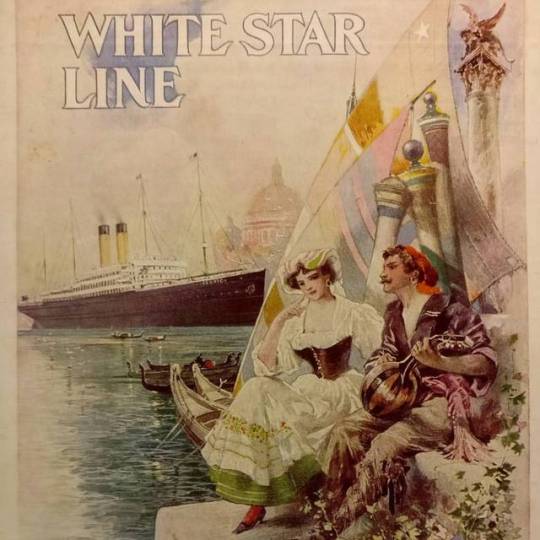
Don't miss our Ocean Liner Dinner on April 8th! With a menu inspired by the Titanic's 1st class dinner menu, local theater, and a talk from historian Bill "Mr. Ocean Liner" there couldn't be a better way to support SSHSA's education program. (Though the ship on the cover of this 1914 White Star passenger list is the Cedric, not #Titanic, we loved the pastoral imagery and colors.) Learn more & reserve tickets by calling 401-463-3570, or emailing [email protected]. #whitestar #oceanliner #edwardian #fundraiser #maritimehistory #shiphistory #seahistory #rmstitanic #steamships #ships #ri #rhodeisland (at The Steamship Historical Society of America)
#shiphistory#oceanliner#edwardian#fundraiser#seahistory#steamships#rhodeisland#rmstitanic#ri#titanic#whitestar#maritimehistory#ships
14 notes
·
View notes